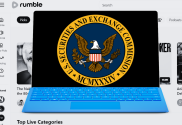I’ve been re-reading Weaving the Web by Tim Berners-Lee. As inventer of the World Wide Web in 1990 and current director of the W3C, Berners-Lee is a visionary and innovator. His current obsession, the Semantic Web, is not yet widely understood or appreciated. Just like the Web 10 years ago.
Indeed one of Berners-Lee’s earliest Web innovations has still not been widely implemented, more than 10 years after he created it along with the World Wide Web. This invention was intended to be one of the foundation products of the Web, but it never took off. In 2003 the need for this product is more relevant than ever, at a time when “social software” and “collaboration” are the buzzwords of the Web. I’m talking about the Read/Write web browser, or the “web browser/editor” as Berners-Lee refers to it in his book.
The original web in 1990 was made up of a server at CERN (info.cern.ch) , and the 3 protocols URIs, HTTP and HTML. Berners-Lee also created a browser/editor with which to both view the web and create content for it. His browser/editor was actually called WorldWideWeb. As Berners-Lee described it – “the browser would decode URIs, and let me read, write, or edit Web pages in HTML”. However during that period, 1990-93, Berners-Lee was frustrated that nobody else seemed willing to create a browser/editor. At best existing browsers were read-only and mostly text-only too.
Then in 1993 the Mosiac web browser was released – its graphical interface was its defining feature. Succeeding generations of web browsers, Netscape and Microsoft in particular, introduced new graphical and interactive features like tables, forms, and stylesheets. However writing and editing functionality for the browser were overlooked.
Berners-Lee’s dream for a read/write browser remains unfulfilled to this day, although the advent of weblogs has lowered the barrier for people to write to the web. The open-source Mozilla browser has some interactive editing functionality. But Microsoft, with over 90% of the browser market, is showing little sign of further browser innovation. There has also been talk of a non-browser environment for the Web – co-called Rich Internet Applications or microcontent clients. But right here right now, most of us still surf the web with a web browser that is read-only.
Browsing is only half the fun. Contributing something new to the Web, to the world, is where the real rewards are. Berners-Lee of course sums it up best: “I have always imagined the information space (the Web) as something to which everyone has immediate and intuitive access, and not just to browse, but to create.”
Over the next week, I’ll explore what few web browser/editor tools there are available. First of all I’ll check out Amaya, which is the W3C’s browser/editor. Stay tuned…





